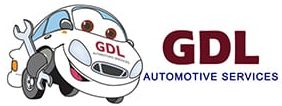Getting a wheel alignment is an important maintenance task that helps to ensure your vehicle’s tyres wear evenly, steer and handle correctly, and provide good fuel economy. When you take your vehicle in for a wheel alignment, you may hear some technical jargon that can be confusing. In this article, we’ll explain some of the common technical terms used in wheel alignments.
Camber
Camber refers to the angle of the wheels when viewed from the front or rear of the vehicle. If the top of the wheel leans inward towards the vehicle, it’s called negative camber, and if it leans outward, it’s called positive camber. Camber affects tyre wear and handling, and it’s adjusted by changing the angle of the wheel’s suspension.
Toe
Toe refers to the angle of the wheels when viewed from the top of the vehicle. If the wheels point inward towards each other, it’s called toe-in, and if they point outward, it’s called toe-out. Toe affects tyre wear and steering, and it’s adjusted by changing the length of the tie rods that connect the steering system to the wheels.
Caster
Caster refers to the angle of the steering axis when viewed from the side of the vehicle. If the steering axis tilts backward, it’s called positive caster, and if it tilts forward, it’s called negative caster. Caster affects stability and steering, and it’s adjusted by changing the angle of the upper or lower control arms.
Thrust angle
Thrust angle refers to the angle of the rear wheels when viewed from the top of the vehicle. If the rear wheels point towards the left or right of the vehicle, it’s called thrust angle. Thrust angle affects the vehicle’s tracking and handling, and it’s adjusted by changing the angle of the rear suspension.
Ride height
Ride height refers to the height of the vehicle from the ground to the bottom of the chassis. Ride height affects the vehicle’s handling and stability, and it’s adjusted by changing the suspension components or adding or removing weight from the vehicle.
Centerline
Centerline refers to the imaginary line that runs down the center of the vehicle from front to back. Centerline affects the vehicle’s steering and handling, and it’s adjusted by aligning the steering components to the centerline of the vehicle.
understanding the technical jargon for wheel alignments can be helpful when you take your vehicle in for maintenance. Camber, toe, caster, thrust angle, ride height, and centreline are all important factors that affect your vehicle’s handling, stability, and tyre wear. By knowing what these terms mean, you can better communicate with your mechanic and ensure that your vehicle is properly aligned for safe and efficient driving.


